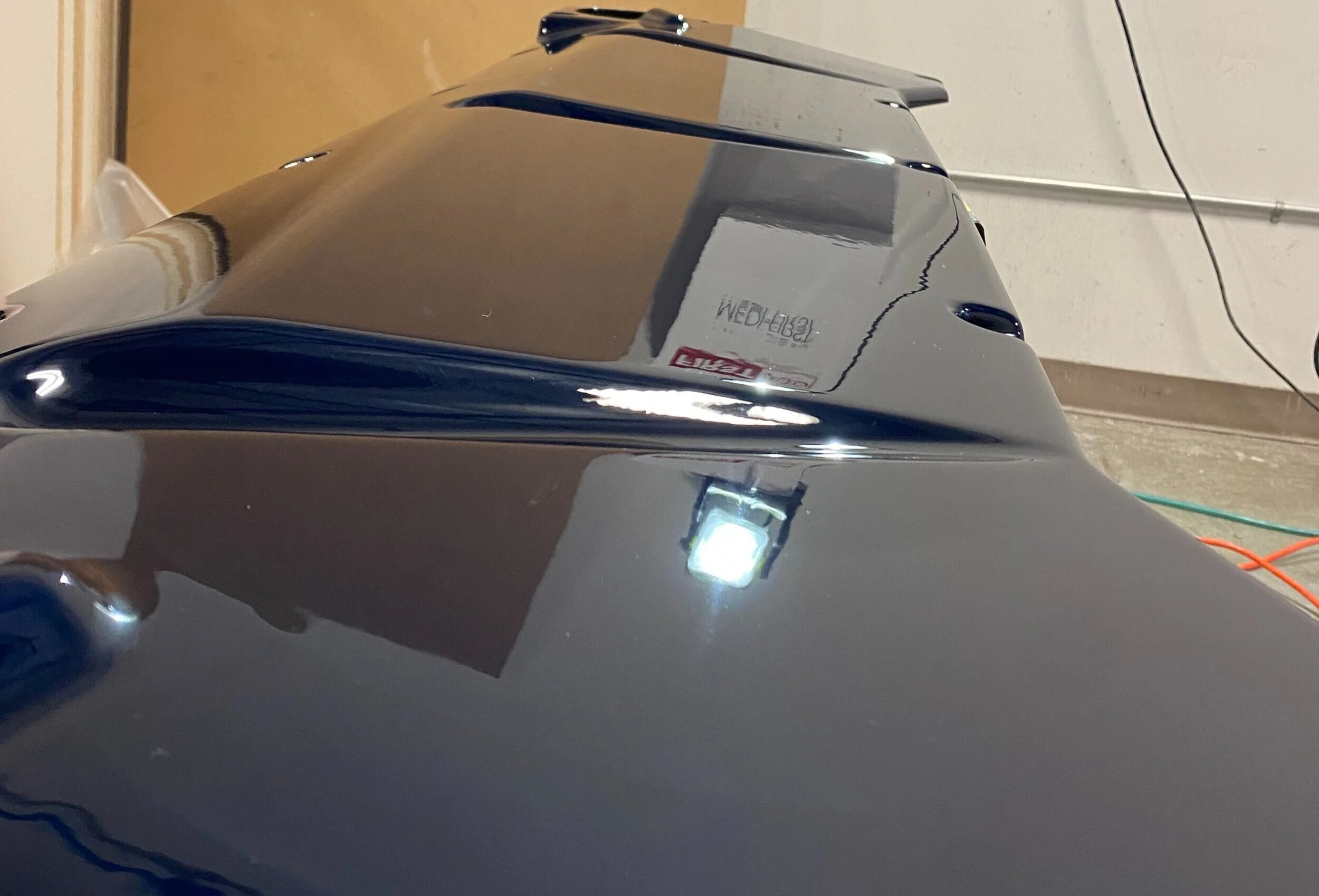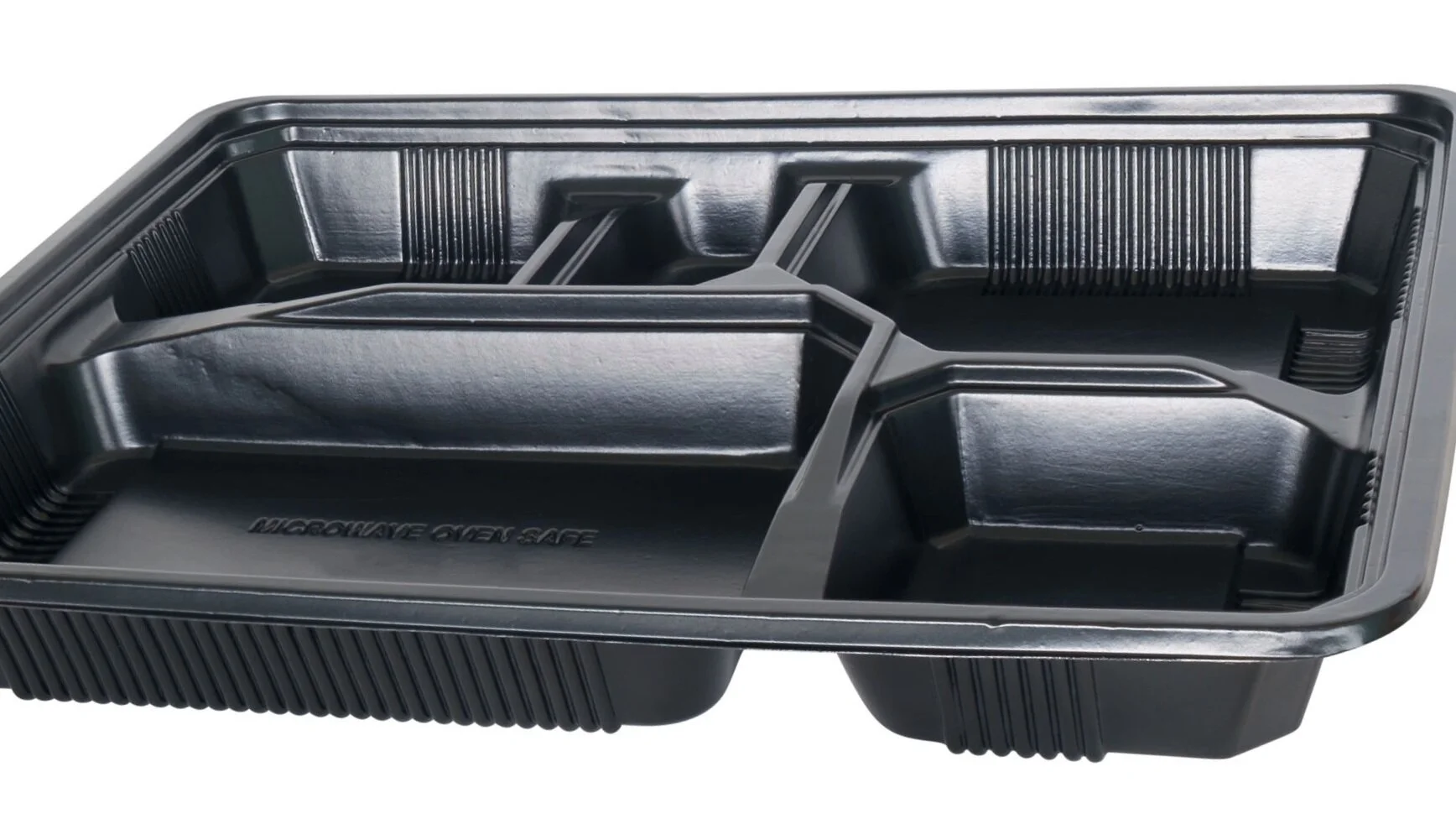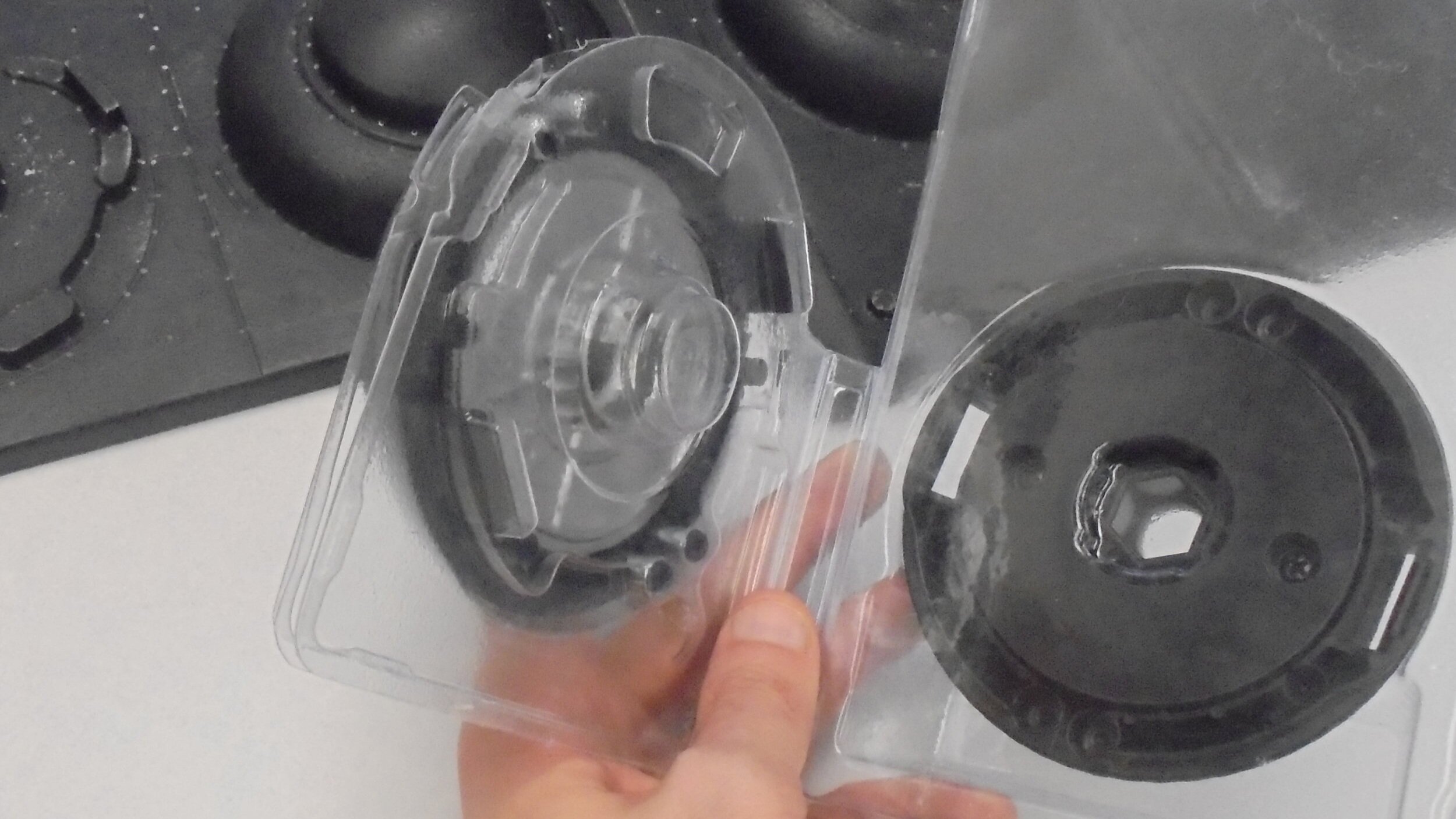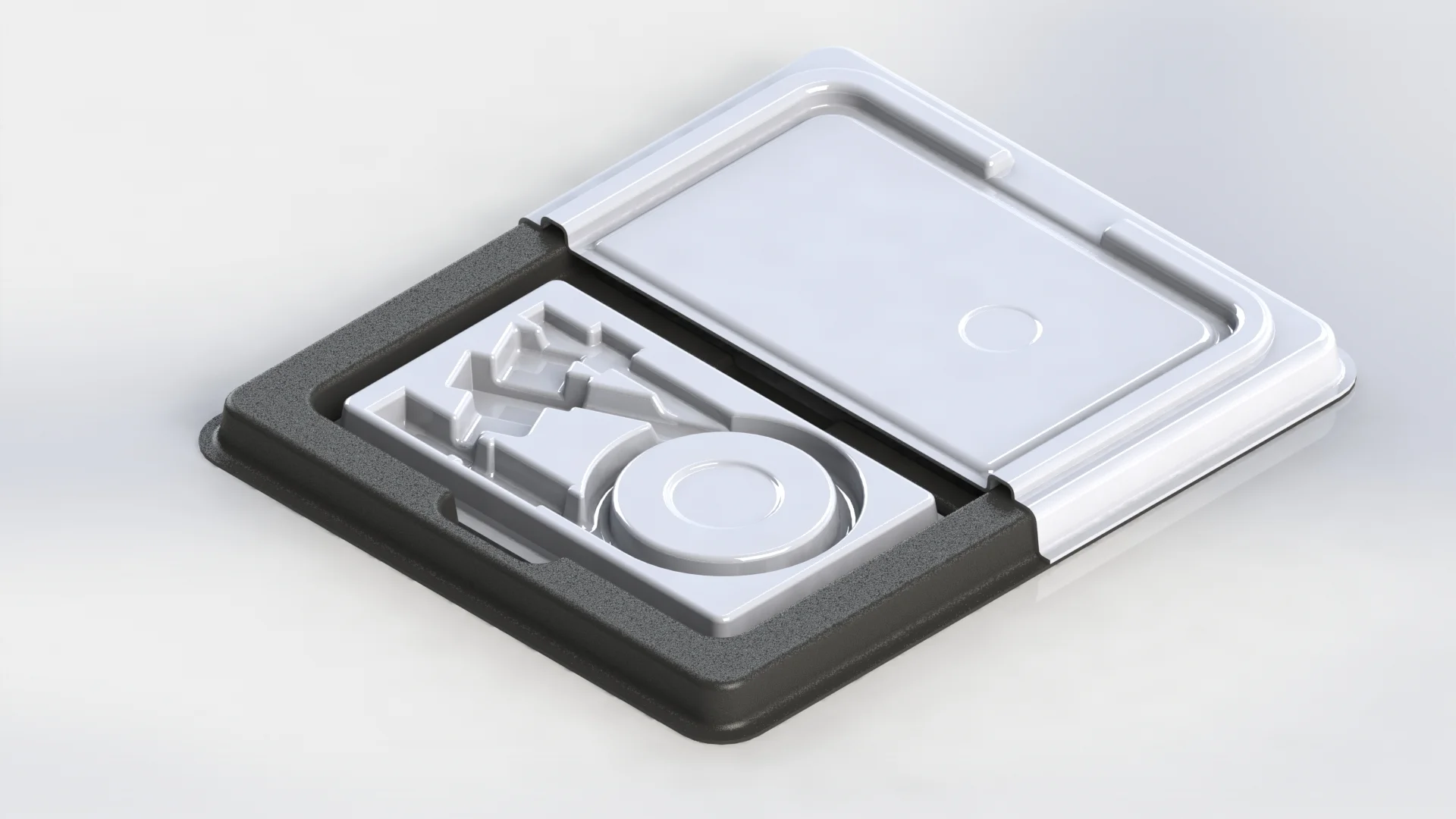Thermoforming and Vacuum Forming
Thermoforming and vacuum forming work by drawing hot thermoplastic sheets around a mold. Next, any remaining air is sucked out to ensure consistent definition. The product is then taken off the mold and excess plastic is trimmed and recycled. Thermoforming is ideal for custom trays, packaging, panels and housings.
This fast and inexpensive technology requires less lead time and has lower tooling costs than injection molding or machining while also offering a lower part cost than 3D printing. Although thermoforming has some design limitations, it offers a wide variety of materials and provides excellent value for compatible projects such as 3D Printing for Prototyping.
Get a Customized Quote in 24 Hours or Less
Request a quote with our Quick Quote tool or by giving us a call. Our engineers will review your design and send you a price in 24 hours or less. Thermoformed products typically ship in 2–4 weeks.
Versatile Thermoplastics
Real thermoplastics are strong, durable and inexpensive compared to 3D printed materials. RapidMade offers an extensive range of thermoforming plastics, including PETG, HIPS, ABS, PC, Acrylic and many more, in thicknesses ranging from 0.020" to 0.250" (0.5 mm to .6.5 mm). Click here to see all of our thermoforming materials.
With so many material options, thermoformed products are able to meet a host of mechanical and aesthetic demands, from conductivity and heat resistance to FDA food-grade certifications. Thermoformed parts can be rigid, flexible, translucent or opaque. This versatility lends itself to applications in a variety of industries, including food, medicine, electronics and manufacturing.
Thermoforming molds are traditionally milled from urethane or aluminum. This can be expensive, especially for small- to medium-sized parts, and takes 1–3 weeks to produce. By using 3D printed molds made with the HP Multi Jet Fusion (MJF), RapidMade can create durable molds for thermoforming in under 48 hours for as little as 50% of the cost of machining.
The Nylon PA-12 used by MJF printing is excellent for thermoforming: It offers high temperature resistance, doesn’t bond with other materials and doesn’t require additional finishing for opaque parts. Moreover, 3D printed molds can easily produce undercuts and other complex shapes that would be difficult or impossible to machine.
These faster production times make it easier than ever to prototype thermoformed parts. Adjustments to 3D printed molds are cheap and quick, allowing you to get more iterations during your product development cycles. The time and cost savings of 3D printed molds make thermoforming an economical option in an even wider range of situations throughout your product life cycle. Click here to find out more!
Efficient Custom Trays
Custom trays can benefit a range of professional environments, from automated assembly lines to hospital operating rooms. By tailoring solutions to your specific needs, RapidMade can create tools that fit seamlessly into your existing production. Learn more here.
Durable Panels & Housings
Themoforming is often the best choice for large panels and housings owing to its large bed sizes and inexpensive tooling. These durable and versatile products are well-suited to a wide range of industrial and consumer applications.
Affordable Replacement Parts
Replacement parts can be expensive, and if they have been discontinued by the OEM, they may be impossible to find. With our reverse engineering and thermoforming services, we can quickly manufacture durable replacement parts to your specifications.
Thermoforming Design Considerations
We can thermoform parts as large as 4’ x 8’ and offer incremental window sizes as small as 5” x 5” to save material costs on smaller parts.
When designing parts to be thermoformed, there are a few important considerations to ensure consistency. Draw depth, or the ratio of the part’s depth to its width, cannot exceed 4:3. We recommend a maximum draw depth of 1:1 if possible. Thermoformed parts also require 2-5 degrees of draft for internal cavities and 4-8 degrees of draft for raised features in order to be removed from their molds.
To learn more about designing parts for thermoforming, check out our Thermoforming Design for Manufacturing (DFM) Guide.
Thermoforming Tolerance Guidelines |
||
|---|---|---|
| ACTIVITY | TOLERANCE | GUIDELINE |
| FORMED MEASUREMENTS | +/-0.020” | Additional 0.001” per Inch beyond 12” |
| DRILLED HOLE DIAMETERS | +/-0.005” | Holes Equal or Lesser than 1” |
| DRILLED HOLE DIAMETERS | +/-0.010” | Holes from 1” to 5” |
| SLOTS | +/-0.010” | Slot Equal to or Lesser than 1” Any Direction |
| SLOTS | +/-0.020” | Slots Greater than 1” |
| 5 AXIS TRIM | +/-0.015” | Trim Features under 5” |
| 5 AXIS TRIM | +/-0.020” | Trim Features Greater than 5” |
Thermoforming Materials and Applications
Thermoforming is compatible with a variety of materials that can achieve a wide range of thermal, mechanical and chemical properties. Below, we’ve put together a little guide to the materials we commonly use for thermoforming and some of their ideal applications. Though we provide some examples here, these materials can be used for many different products. If you’d like more information about any of the materials listed below, reach out to us at info@rapidmade.com or at 503-943-2781.
HIPS (Polystyrene)
Our most commonly-used material. Inexpensive and functional. Can be brittle at low temperatures and off-gas at higher temperatures. Used for packaging trays, covers and light-duty structural pieces. Food-safe versions available.
PETG (Polyethylene Terephthalate) (Polyester)
Moderately inexpensive material with good water and oxygen barriers. Able to stand up to substantially lower temperatures than HIPS. Often used for food-safe applications, freezer packaging and water bottles.
ABS (Acrylonitrile Butadiene Styrene)
Medium-cost impact-resistant engineering plastic which can made be flame-retardant or UV-resistant by blending with other materials. Used for high-end packaging and moderate-load structural components.
Kydex T (ABS/PVC) or Kydex 100 (Acrylic/PVC)
Expensive flame-retardant engineering plastic with high impact resistance. Used for moderate-load structures, covers and enclosures that require fire resistance. Kydex 100 is our go-to material for radomes.
PC (Polycarbonate)
Moderately expensive engineering plastic with high stiffness, impact strength and temperature resistance, plus options for UV and scratch resistance. Used for glass replacements on phones, TVs, lights or glasses, and high-temp applications. Harder to form, especially for fine details.
PE, HDPE or LDPE (Polyethylene)
Moderately hard, inexpensive plastic with high chemical resistance. Does not off-gas at high temperatures. Chemical and thermal durability makes it well-suited for chemical-resistant containers. Higher shrink rate than other materials, which lowers tool life and increases variability between parts.
PP (Polypropylene)
Moderately-priced alternative to PE with improved thermal and mechanical properties. Higher level of chemical resistance than most plastics. Used as an engineering plastic and for applications involving food contact.
PVC (Polyvinyl Chloride)
Hard engineering plastic with strong mechanical properties and high chemical and electrical resistance. Can be rigid or flexible. Used for certain chemical-resistant containers.
Acrylic
An inexpensive, rigid and brittle plastic with high UV resistance. More difficult to form than other plastics. Not intended for tight bends or details. UV resistance makes it well-suited to outdoor applications.
Start Thermoforming Today
Whether you are developing a new project or are ready to start production, RapidMade’s 3D Printing Services help you get it done better, faster and at less cost. Our contract engineering services and custom manufacturing solutions are available for every stage of your product life cycle.
Check out our 5-Minute Buyer’s Guide to learn more about our services or get started now with a free quote in 24 hours or less!








